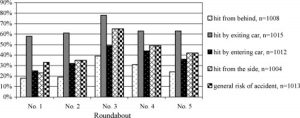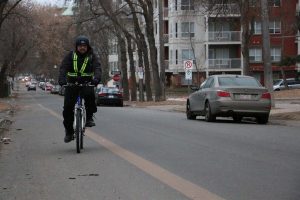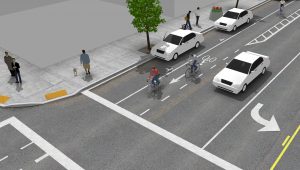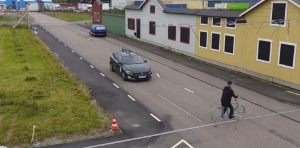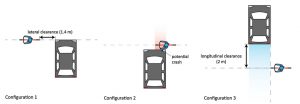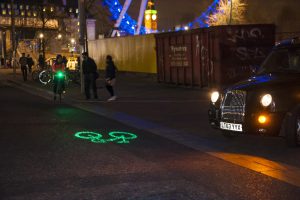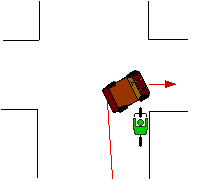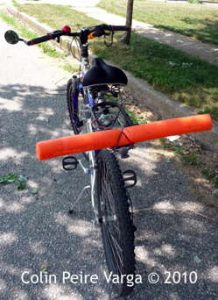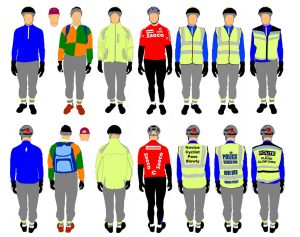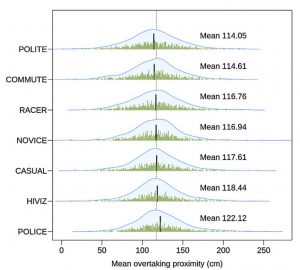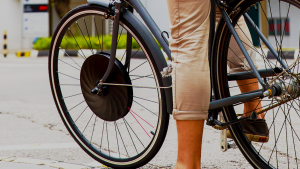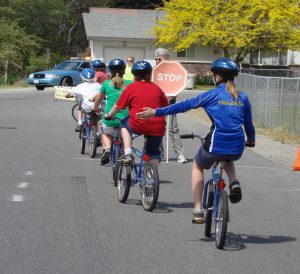This study set out to answer an interesting question. Why is it that converting intersections into roundabouts doesn’t make them safer for cyclists? Roundabouts are safer than intersections for motor vehicles, so why not for cyclists? Most accidents involve a cyclist already circulating the roundabout and a car entering or exiting, but the exact causes were not well known. 1,019 Danish cyclists were interviewed to attempt to answer this question. Cyclists were stopped at a roundabout and interviewed for approximately 10 minutes. They were asked about risk perception and background factors such as travel behavior, familiarity with the roundabout, helmet use, bicycle accident involvement and near-accident involvement, and cyclist characteristics (age and gender).
Almost half of the participants had been involved in a near accident but only about 5 percent had involved a roundabout. 82 percent of cyclists perceived the situation of circulating a roundabout while a car is exiting as ‘very much’ or ‘to a large extent’ dangerous. Roundabouts without cycle facilities were also perceived as riskier. This provides some useful information but doesn’t really answer the question of why don’t roundabouts make junctions safer for cyclists.
Abstract:
Converting an intersection into a roundabout improves motor vehicle safety, but a similar safety effect is not found for car-bicycle collisions. Very little is known about the reasons behind these collisions. In this study a first step towards an understanding of the reasons behind these collisions is taken. The study focuses on cyclists’ perceived risk in specific situations, factors influencing the perception of risk and cyclists’ knowledge about traffic rules regulating the interaction between road users in roundabouts. One thousand and nineteen cyclists aged 18-85 participated in the study. Data were collected using structured interviews conducted in five Danish roundabouts. Underestimation of risk and lack of knowledge about relevant traffic rules may contribute to car-bicycle collisions in roundabouts. Cyclists prefer road designs with a clear regulation of road user behaviour. A need to increase knowledge about traffic rules regulating road user behaviour in roundabouts is identified.
Reference:
Cyclists’ perception of risk in roundabouts
Møller, Mette (Danish Transport Research Institute, Knuth-Winterfeldts Allé, DK-2800 Kgs. Lyngby, Denmark); Hels, Tove Source: Accident Analysis and Prevention, v 40, n 3, p 1055-1062, May 2008
